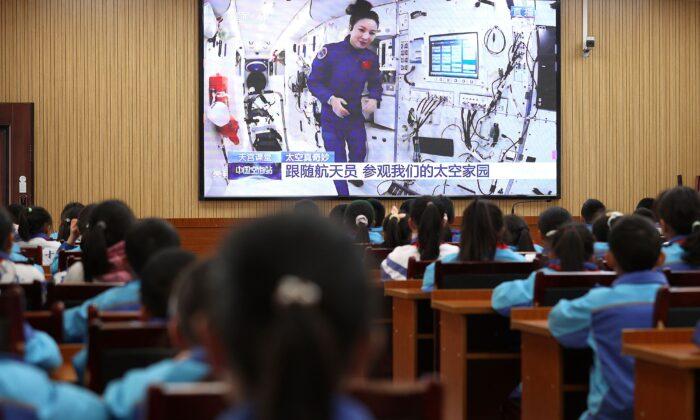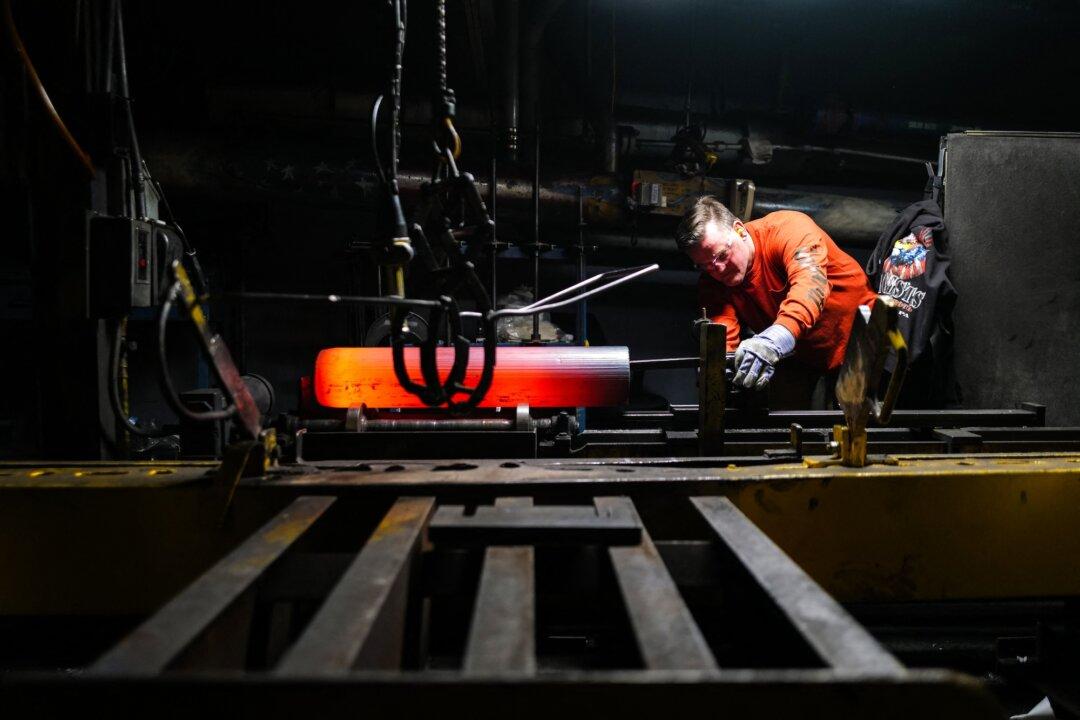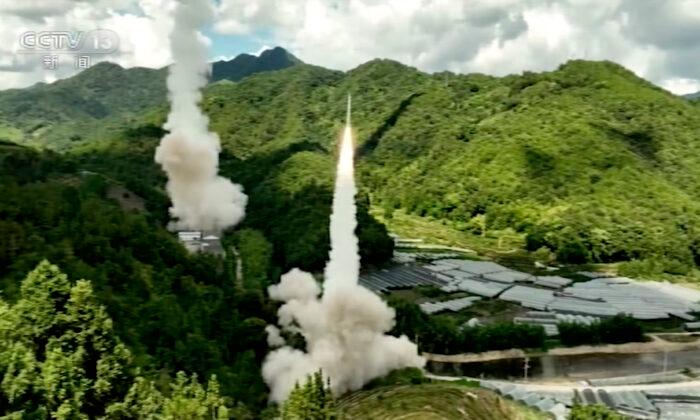For the Chinese Communist Party (CCP), hypocrisy flows like water off a duck.
The CCP’s People’s Liberation Army (PLA) builds multiple naval air missile bases in the South China Sea, threatening sea lanes vital to global commerce, but claims it’s the U.S. Navy freedom of navigation exercises that “threaten the peace.”
The Chinese regime spends decades preparing to invade and destroy democratic Taiwan, which wishes only to live in peace with the CCP. On Dec. 30, Chinese Foreign Minister Wang Yi made a veiled nuclear threat against America for its support for Taiwan, saying it “would pay an unbearable price.”
But CCP hypocrisy hit a new “high” on Dec. 28, when Chinese Foreign Ministry spokesman Zhao Lijian explained that on Dec. 3, China issued a memo to the United Nations Office for Outer Space Affairs, complaining about two incidents in which two satellites of the U.S. SpaceX Corporation’s Starlink internet satellite constellation came close to China’s new Tiangong space station.
These satellites made close passes on July 1 and Oct. 31, coming within 2.5 miles on the former date, with the Chinese space station taking an evasive maneuver during the latter date.
Then in a Dec. 30 Xinhua state media article, titled “With great space power comes responsibility,” it was suggested that the United States was in violation of the 1967 U.N. Outer Space Treaty for failing to prevent the Starlink from threatening the Chinese space station.
Xinhua then noted: “The United States should respect the international order in space based on international law, said Chinese Foreign Ministry spokesperson Zhao Lijian on Tuesday, when asked to comment on the events. The United States strongly advocated ‘responsible behavior in outer space,’ but ‘disregarded its treaty obligations,’ thus constituting a ‘typical double standard,’ said Zhao.”
If there is any double standard for dangerous behavior or creating hazards in space, it is China’s—but don’t expect Beijing to acknowledge that behavior or to avoid future incidents in space.
China created the greatest man-made hazard in space travel on Jan. 11, 2007, when its fifth ground-based anti-satellite interceptor test successfully intercepted an unworking Chinese weather satellite, creating a debris cloud of over 3,500 trackable pieces.
This debris is the size of a golf ball or larger, traveling 17,000 miles per hour. One “golf ball” could put a large hole in the $150 billion, 15-partner nation International Space Station (ISS), possibly causing its evacuation or worse.
On Nov. 10, 2021, the ISS had to maneuver to avoid Chinese space debris from its 2007 anti-satellite exercise. And on Nov. 15, the space station’s crew of seven astronauts from the United States, Russia, and Germany had to take shelter in two space capsules as the danger of a collision with Chinese space debris was that great.
Also, on April 5, 2011, a piece of Chinese satellite debris from the 2007 anti-satellite exercise passed within 3.7 miles of the ISS.
No U.S. or Russian hostile action in space has exceeded China’s deliberate “close pass” by the ISS by its Shenzhou-7 manned space capsule, which occurred on Sept. 27, 2008.

While most famous for conducting China’s first brief astronaut “space walk,” soon afterwards the Shenzhou-7 launched its 40 kilogram BX-1 microsatellite as it passed within 27.9 miles of the ISS.
This incident was first reported by Russian space enthusiasts and then confirmed by U.S. Strategic Command in a communication given to the National Aeronautics and Space Administration (NASA), and then shared with this analyst.
Launching a satellite projectile at orbital velocities, while passing so close to the ISS, was not a “friendly” gesture. There were two Russians and one American aboard the ISS at the time.
An indication that this exercise was planned well in advance is that a large space-tracking and control ship of the CCP Central Military Commission’s General Armaments Department was on station just north of New Zealand, right under the “ISS interception.”
As far as can be determined, neither the United States nor Russia has complained about these incidents to the powerless United Nations. For that matter, the George W. Bush administration offered no explanation for the Shenzhou-7 close-pass, nor has NASA since commented on the incident.
For its part, it is reasonable to expect that China will use the unplanned and accidental close pass of the Starlink satellites to justify arming its space station. China’s PLA-controlled manned space program has long produced military “dual use” benefits.
Tiangong’s configuration of replicable modules, copied from Russian space stations, is ideally suited for providing new modules with laser or missile weapons for space combat, or warheads for bombing targets on Earth.
The coming year may see Russia finally act on what it has been considering for about 15 years—effecting a divorce from the ISS. NASA is also selecting candidates for U.S. subsidies for private space companies to build new space stations.
Given that the United States, Russia, and China are busily preparing to deter or fight battles in space, perhaps it is appropriate for the new U.S. Space Force to develop defensive modules that can be very rapidly deployed to protect future U.S. space stations.
As for the Chinese regime, its stellar hypocrisy in space further shreds its credibility.





